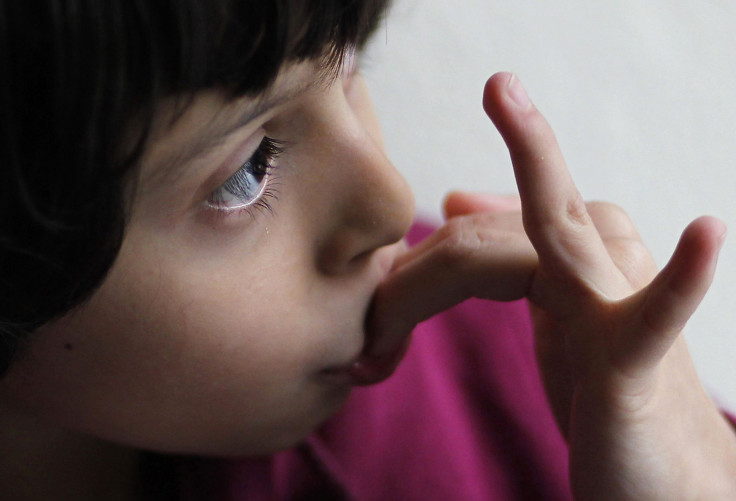Autism In Boys vs. Girls: Brain Scans Reveal Underlying Reason For Gender Differences In Autism Symptoms

Autistic behavior is different in girls than boys, say Stanford University School of Medicine researchers. Their new study not only provides evidence suggesting girls with autism spectrum disorders have distinct characteristics, it also links such gender differences directly to the brain.
Autism is characterized by three core symptoms: social impairments, communication difficulties, and repetitive/restricted behaviors. Yet, when it comes to high-functioning autism, the boys outnumber girls by four to one, noted the authors. While no one understands the reason for this gender imbalance, many researchers suspect girls with autism may simply display less severe (or just different) impairments than boys.
The team of Stanford researchers explored this possibility in their current study. For data, they turned to two separate repositories. First, they queried the National Database for Autism Research, which is funded by the National Institutes of Health, using these parameters: ages 7 to 13 years, phenotype ASD, and IQ greater than 70. Their search came up with 128 girls and 614 boys.
Examining the data, the research team discovered the boys and girls shared similar low scores for social and communication behaviors; however, the girls had scores much closer to the normal range when they were measured for repetitive and restricted behaviors. What might brain scans reveal about these differences?
Scanned Evidence
For the second phase of their study, the researchers searched the Autism Brain Imaging Data Exchange, using these query parameters: ages 7 to 13, IQ greater than 70, and structural MRI included. Here, the search yielded 25 boys with autism, 25 girls with autism, 19 typically developing boys, and 19 typically developing girls, all with accessible brain scans. Once again, among the 50 children diagnosed with autism, the girls and boys shared similar social behavior and communication skill impairment, yet the girls had less-severe repetitive and restricted behaviors.
Next, the researchers analyzed the brain scans. Looking at the scans from typically developing boys and girls, they discovered gender differences “in the right postcentral gyrus, left parahippocampus, right lateral occipital cortex, right putamen, and bilateral cerebellum.” These results, the researchers noted, are consistent with several previous studies of brain structures in children.
Looking at the scans for children with autism, the researchers observed gender differences once again, but in a way dissimilar to that of the typically developing children. Among the children with autism, gray matter patterns in the motor cortex, supplementary motor area, cerebellum, fusiform gyrus, and amygdala “accurately discriminated” the girls from the boys, noted the authors. Importantly, these regions of the brain all contribute to motor function. Since many repetitive behaviors, such as hand-flapping, have a motor component, the results of this study support the frequently observed differences between boys with autism and girls with autism.
Ultimately, the authors say their work suggests a potential reason why there's a low proportion of females diagnosed with autism.
Because repetitive/restricted behaviors are "the most overt and noticeable feature that flags a potential case of the disorder," the authors wrote, "girls with less prominent repetitive/restricted behaviors may miss being tested... or get misclassified as having social communication disorder." On the flip side of that coin, boys with repetitive behaviors may be immediately (and incorrectly) diagnosed with autism, despite the fact that such behavior may signal other neurodevelopmental disorders.
Source: Supekar K, Menon V. Sex differences in structural organization of motor systems and their dissociable links with repetitive/restricted behaviors in children with autism. Molecular Autism. 2015.



























